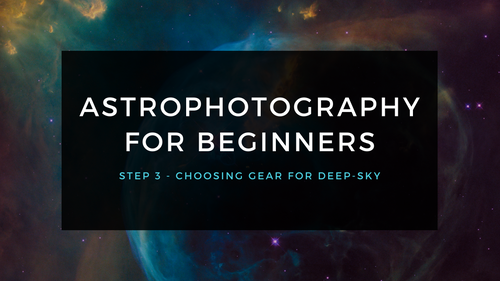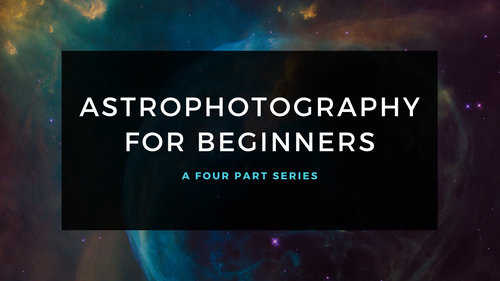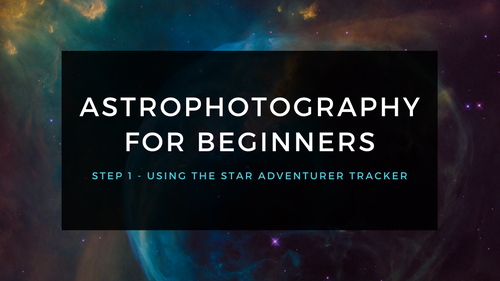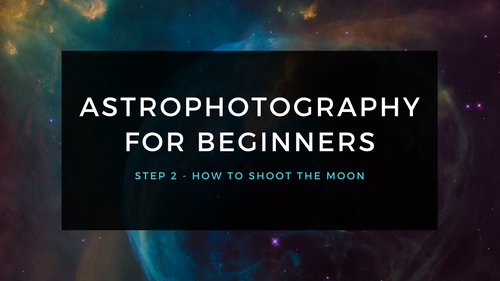

Products in the Same Family
Why Purchase from All-Star Telescope?
Free Expert Support
Whether you are a first timer needing help with setting up or an enthusiast that can't quite make that one thing work, our expert staff are ready to support your needs. With decades of knowledge and first hand experience we've been there and we can help you through it!
Stress Free, Secure Transactions
You can trust purchasing and delivery with All-Star Telescope. All of our transactions are 100% secure and Level 1 PCI DSS compliant thanks to Shopify's ShopPay platform. For additional protection, we insure 100% of the value of every shipment we make. If it get's lost during shipment, we replace it. If it gets damaged during shipment, we replace it. We make sure your product arrives exactly as you would expect it to; we promise.
We also ensure privacy protection. We never keep any of your credit card information on file and any of your personal data is stored according to our policies.
30 Day Return Policy
Buy with confidence knowing that we accept returns up to 30 days after purchase. We want you to have something you will actually use and we are confident that we keep good quality products in our store with No Junk.
Price Match Promise
Shipping around for the best price is tough, we make it easier by offering the best pricing in the market. But if you find a better price on an in-store item somewhere else we will match it!
Product Description
The Antlia LRGB-V Pro series filters are designed for monochrome cameras that use both CCD and CMOS sensors. Suitable sensors include KAF/KAI sensors, Sony IMX sensors, GSENSE and other sensor manufacturers. The LRGB-V Pro set is designed to approximately equalize the RGB response from the flux of red-sensitive CCD detectors.
The result is that you achieve 1:1:1 equalized RGB exposures with the benefit of simplified post processing and reduced imaging time. New LRGB-V Pro series filters feature a carefully designed spectral gap between the green and red channels to minimize the effect of light pollution and to provide high transmittance of useful frequencies. The filters’ design maximizes the capture of details from fainter galaxies and nebulae emissions. The LRGB-V Pro series filters guarantee the high transmission of the OIII band in both the B and G filters (OIII signal >95% in blue and green). The bandwidth of the B channel is narrowed for the purpose of improving the blue channel overflow (haloing) around the star due to B channel overexposure. Antlia LRGB-V Pro series filters block the emission line around 589nm by the design of wide gap between G and R filters, which suppresses much of the light pollution from high pressure sodium and mercury street lamps and results in a more natural color balance. The uniformity in substrate thickness delivers good parfocal performance across all Antlia filters.
Highlight of LRGB-V Pro series set
- Premium coating technology and finely polished substrate Our quality selection processes are optimized to ensure highly homogeneous glass-substrates. Our application of advanced optical coating technology and double-sided precision polishing achieves both consistent parfocal and optical performance across all filters.
- Maximized colour balance and contrast for each of the three RGB channels and excellent S/N performance Dozens of coating layers are deposited on both sides of the glass substrate that enables LRGB-V Pro filters to achieve a high SNR. The Anti reflection coatings and carefully designed spectral gaps minimize unwanted light scatter and maximize useful signal data for each filter channel.
- Tighter star profiles and halo reduction The cut-off rate of LRGB-V Pro series set is designed in high level to minimize halos around brighter stars and reduce star bloat. Our careful design of the blue channel transmission characteristics targets the problem of blue star bloating.
Application and Performance
- Designed for monochrome CCD and CMOS cameras
- Great imaging colors for celestial objects, galaxies, star clusters and nebulae
- AR anti-reflection film design for secondary reflection and star halo reduction
- R-Filter provides maximum transmission of H-alpha and S II emission
- B/G overlap doubles the energy in the OIII line
- Balanced RGB-design offer 1:1:1 exposure times for most telescope optical systems
- All Antlia LRGB-V Pro filters are edge blackened to eliminate internal reflections from stray light
- The substrate thickness of each of the four LRGB filers is maintained to tight tolerances
- Not recommended for Solar observing and imaging
- Not recommended for visual observation
Important Note: When using any parfocal filters, the user may still experience focus shifts between filters during long imaging sessions. It is important to remember that temperature shifts will change the length of the optical path due to the differential contraction between the telescope tube and the glass optical elements. It is recommended that the photographers check focus either manually or automatically in software every 1 to 2 hours. In cases where the telescope has been brought from a warm environment to outside, more frequent focus checks are required until the equipment has stabilized nearer to ambient temperature.
Specifications
- Basic Substrate: optical substrate
- Filter Thickness: 2mm+/-0.05mm for 1.25"
- Surface Quality: S/D (scratch/dig)= 60/40 (Refer to MIL-O-13830)
- Transmitted Wavefront: Lambda/4 or better.
- Parallelism: less than 30 arcsec
- Single / Non-glued substrate
- Warranty: 3-years against delamination
Additional Articles, Videos, and Links

Astrophotography for Beginners Step 4: Shooting Deep-Sky Images
Taking deep sky pictures can be daunting, luckily there is an easy process to follow to allow you to get great shots! Here is the typical process for actually taking deep-sky images in the field.

Astrophotography for Beginners Step 3: Choosing Gear for Deep-Sky Imaging
Using a star tracker gains you experience with the fundamentals of deep-sky imaging. Shooting the Moon gains you experience focusing and framing through your telescope. Through your sessions you’ll...

Astrophotography for Beginners - Start Here: Getting into Astrophotography Step by Step
Shooting the night sky has never been more popular, nor easier. The choice of equipment has also never been better, or more affordable. However, as per the advice given by Dickinson and Dyer in the...

Astrophotography for Beginners Step 1: Using the Star Adventurer Tracker
By far the most economical and easiest way to capture beautiful images of the Milky Way and large deep-sky objects like the Andromeda Galaxy (shown here) is to use a star tracker. Here are steps an...

Astrophotography for Beginners Step 2: How to Shoot the Moon
Close-ups of the Moon are rewarding, and an easy way to learn to shoot through your telescope. While good results are possible with a phone camera clamped to an eyepiece (as shown below), this tuto...

